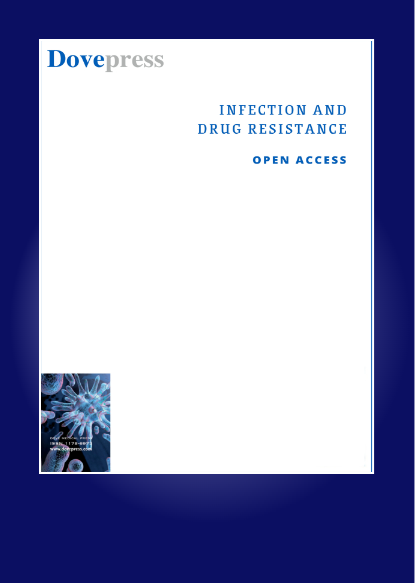Clinical Features and a Prediction Model for Early Prediction of Composite Outcome in Chlamydia psittaci Pneumonia: A Multi-Centre Retrospective Study in China
IF 2.9
3区 医学
Q2 INFECTIOUS DISEASES
引用次数: 0
Abstract
Introduction: C. psittaci pneumonia has atypical clinical manifestations and is often ignored by clinicians. This study analyzed the clinical characteristics, explored the risk factors for composite outcome and established a prediction model for early prediction of composite outcome among C. psittaci pneumonia patients.Methods: A multicenter, retrospective, observational cohort study was conducted in ten Chinese tertiary hospitals. Patients diagnosed with C. psittaci pneumonia were included, and their clinical data were collected and analyzed. The composite outcome of C. psittaci pneumonia included death during hospitalization, ICU admission, and mechanical ventilation. Univariate and multivariable logistic regression analyses were conducted to determine the significant variables. A ten-fold cross-validation was performed to internally validate the model. The model performance was evaluated using various methods, including receiver operating characteristics (ROC), C-index, sensitivity, specificity, positive/negative predictive value (PPV/NPV), decision curve analysis (DCA), and clinical impact curve analysis (CICA).
Results: In total, 83 patients comprised training cohorts and 36 patients comprised validation cohorts. CURB-65 was used to establish predictive Model 1. Multivariate logistic regression analysis identified three independent prognostic factors, including serum albumin, CURB-65, and white blood cells. These factors were employed to construct model 2. Model 2 had acceptable discrimination (AUC of 0.898 and 0.825 for the training and validation sets, respectively) and robust internal validity. The specificity, sensitivity, NPV, and PPV for predicting composite outcome in the nomogram model were 91.7%, 84.5%, 50.0%, and 98.4% in the training sets, and 100.0%, 64.7%, 14.2%, and 100.0% in the validation sets. DCA and CICA showed that the nomogram model was clinically practical.
Conclusion: This study constructs a refined nomogram model for predicting the composite outcome in C. psittaci pneumonia patients. This nomogram model enables early and accurate C. psittaci pneumonia patients’ evaluation, which may improve clinical outcomes.
Keywords: Chlamydia psittaci pneumonia, nomogram, prediction model, composite outcome
用于早期预测鹦鹉热衣原体肺炎综合结果的临床特征和预测模型:中国多中心回顾性研究
导言:鹦鹉热杆菌肺炎临床表现不典型,常常被临床医生忽视。本研究分析了鹦鹉热肺炎患者的临床特征,探讨了导致复合预后的危险因素,并建立了鹦鹉热肺炎患者复合预后的早期预测模型:方法:在十家中国三级医院开展了一项多中心、回顾性、观察性队列研究。方法:在国内十家三甲医院开展了一项多中心回顾性观察队列研究,纳入了确诊为鹦鹉热嗜血杆菌肺炎的患者,并收集和分析了他们的临床数据。鹦鹉热杆菌肺炎的综合结局包括住院期间死亡、入住重症监护室和机械通气。通过单变量和多变量逻辑回归分析确定了重要变量。为了对模型进行内部验证,还进行了十倍交叉验证。采用多种方法对模型性能进行评估,包括接收者操作特征(ROC)、C指数、灵敏度、特异性、阳性/阴性预测值(PPV/NPV)、决策曲线分析(DCA)和临床影响曲线分析(CICA):共有 83 名患者组成训练队列,36 名患者组成验证队列。CURB-65 用于建立预测模型 1。多变量逻辑回归分析确定了三个独立的预后因素,包括血清白蛋白、CURB-65 和白细胞。这些因素被用于构建模型 2。模型 2 具有可接受的区分度(训练集和验证集的 AUC 分别为 0.898 和 0.825)和稳健的内部有效性。在训练集中,提名图模型预测综合结果的特异性、敏感性、NPV 和 PPV 分别为 91.7%、84.5%、50.0% 和 98.4%,在验证集中分别为 100.0%、64.7%、14.2% 和 100.0%。DCA和CICA表明,提名图模型具有临床实用性:结论:本研究构建了一个完善的提名图模型,用于预测鹦鹉热杆菌肺炎患者的综合预后。结论:本研究构建了一个精细的提名图模型,用于预测鹦鹉热肺炎患者的综合预后。该提名图模型可对鹦鹉热肺炎患者进行早期、准确的评估,从而改善临床预后:鹦鹉热衣原体肺炎、提名图、预测模型、综合结果
本文章由计算机程序翻译,如有差异,请以英文原文为准。
求助全文
约1分钟内获得全文
求助全文
来源期刊

Infection and Drug Resistance
Medicine-Pharmacology (medical)
CiteScore
5.60
自引率
7.70%
发文量
826
审稿时长
16 weeks
期刊介绍:
About Journal
Editors
Peer Reviewers
Articles
Article Publishing Charges
Aims and Scope
Call For Papers
ISSN: 1178-6973
Editor-in-Chief: Professor Suresh Antony
An international, peer-reviewed, open access journal that focuses on the optimal treatment of infection (bacterial, fungal and viral) and the development and institution of preventative strategies to minimize the development and spread of resistance.
 求助内容:
求助内容: 应助结果提醒方式:
应助结果提醒方式:


